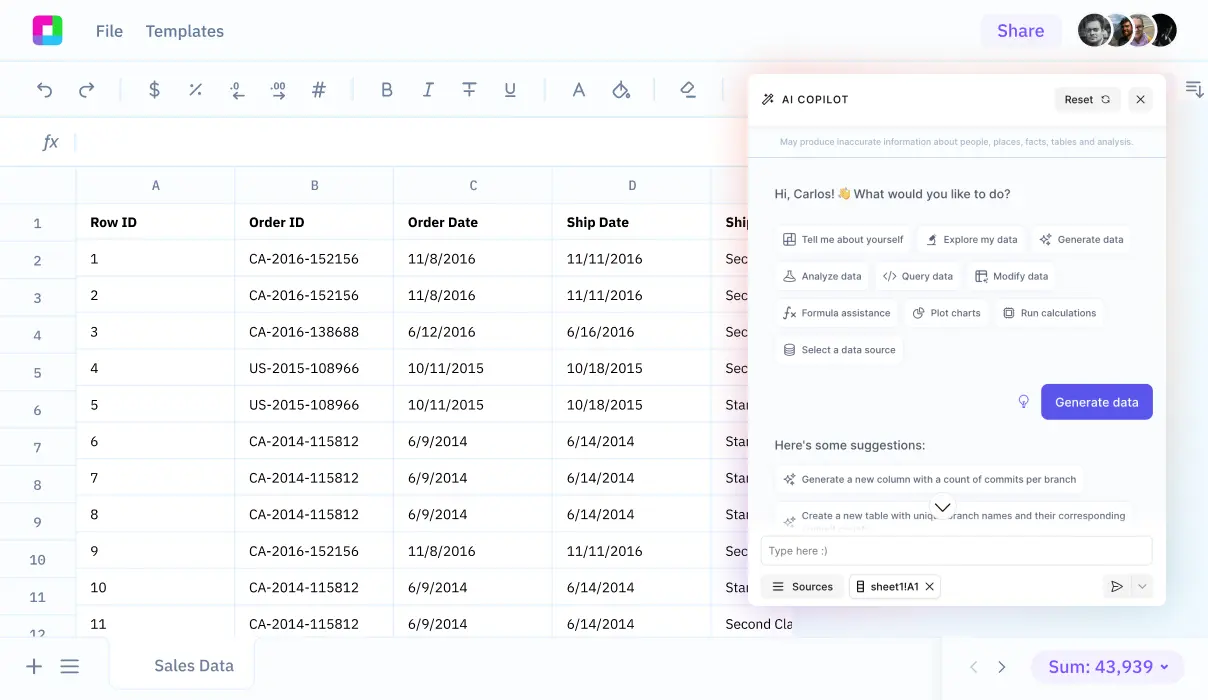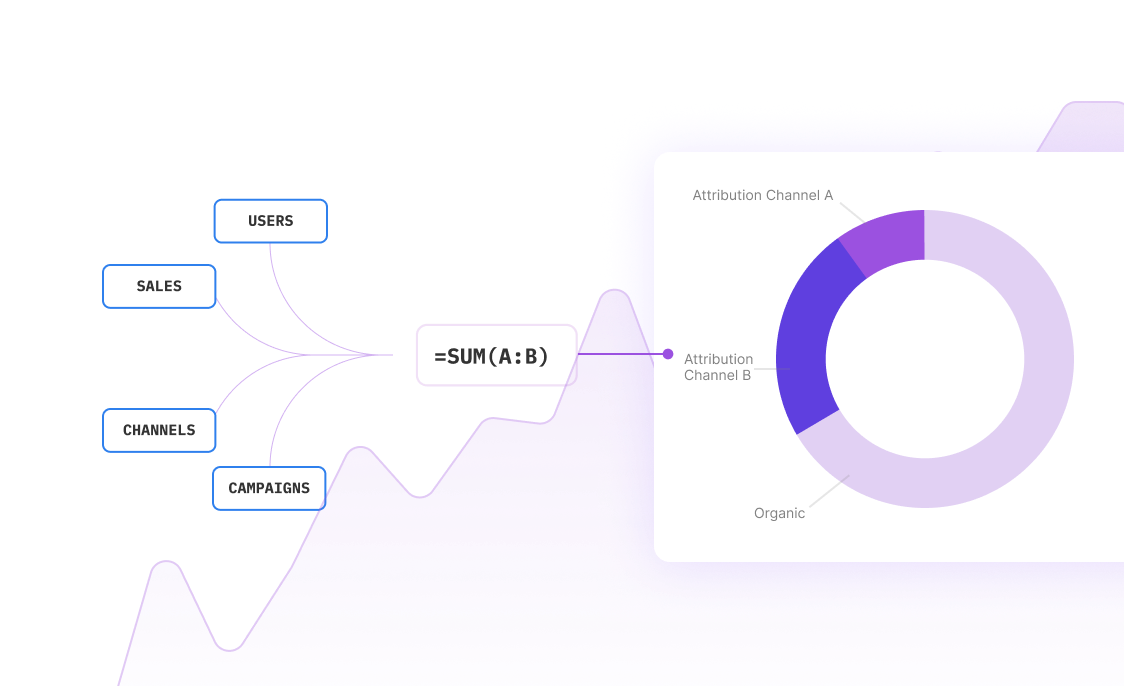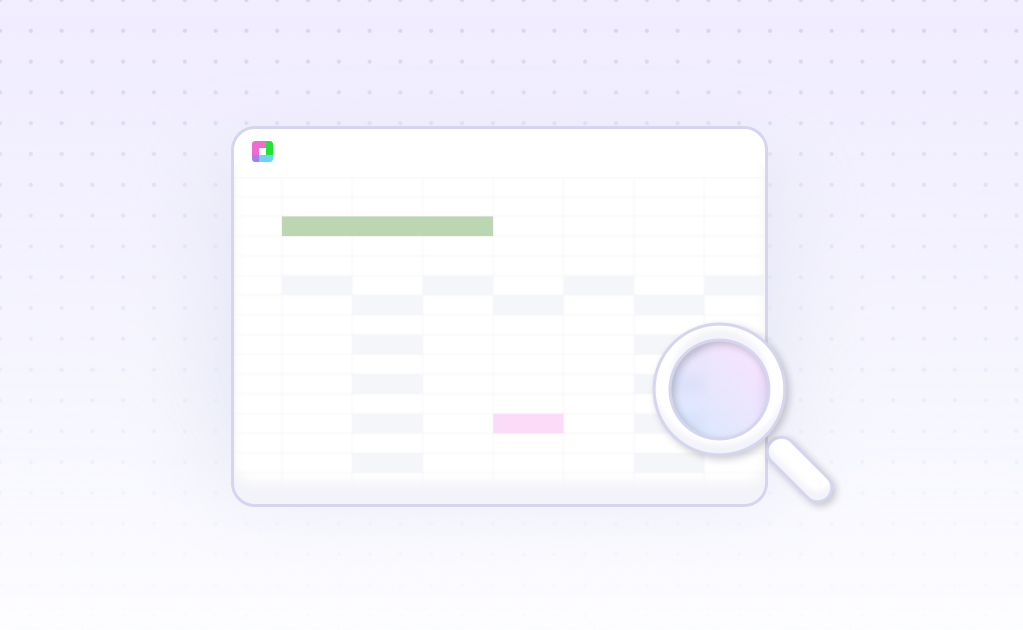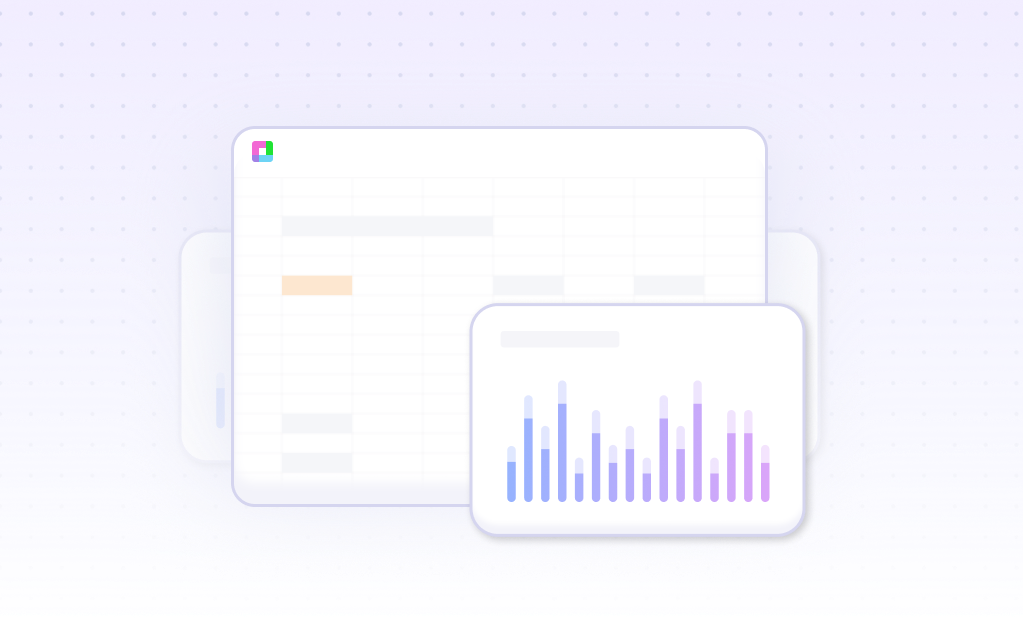
Introduction
Financial multiples analysis is a crucial valuation method that involves calculating key metrics like Enterprise Value and LTM EBITDA. While Excel remains the traditional tool for these calculations, new AI-powered alternatives are emerging. Excel users can compute multiples by combining share counts, prices, and financial statement data, but this requires specific technical knowledge.
Sourcetable offers an innovative AI-powered solution that combines spreadsheet functionality with natural language processing. This platform integrates with over 100 data sources and responds to conversational commands, making financial analysis accessible to users without extensive Excel experience. For those seeking alternatives to manual Excel calculations, Sourcetable accelerates formula creation and data manipulation while maintaining the familiar spreadsheet interface.
Learn how to perform financial multiples analysis with Sourcetable's AI assistant at sourcetable.com/signup.
Why Sourcetable Excels at Financial Multiples Analysis
Forward-priced multiples provide superior valuation comparisons and DCF terminal values while avoiding one-time item distortions. Sourcetable's AI-powered platform streamlines this analysis with automated data extraction, real-time error detection, and advanced predictive analytics.
Key Advantages Over Excel
Unlike Excel, Sourcetable offers built-in audit trails and multi-user collaboration features that ensure accuracy and transparency in financial analysis. The platform's AI capabilities automate data processing and enhance research capabilities, dramatically reducing the time spent on manual calculations.
Cost-Effective Solution
Sourcetable provides enterprise-grade financial analysis capabilities through a free pricing model with API access. This contrasts with traditional solutions that require per-user licensing fees and complex deployment processes.
Enhanced Collaboration and Support
The platform's multi-user collaboration features enable real-time teamwork on financial models. Natural language processing allows analysts to quickly transform complex analyses into clear visualizations and reports, streamlining the decision-making process.
Benefits of Financial Multiples Analysis with AI-Powered Spreadsheets
Why Financial Multiples Analysis Matters
Financial multiples analysis enhances forecast accuracy by enabling company-to-competitor comparisons. This improved forecasting leads to more precise DCF valuations. The analysis helps companies stress-test cash flow forecasts and understand performance gaps against competitors, while revealing strategic positioning for value creation.
Advantages of AI-Powered Financial Analysis
Modern AI-powered spreadsheet tools provide comprehensive financial performance views with natural language capabilities. These platforms enable users to analyze vast datasets, identify trends, and generate actionable insights across finance, procurement, sales, and inventory management. The AI support extends to programming languages like Python, SQL, and JavaScript, enabling more accurate data analysis and visualization.
AI-driven financial analysis tools transform complex data into shareable insights, facilitating informed decision-making across organizations. The natural language interface simplifies financial data interpretation, while advanced visualization capabilities turn analysis into clear, actionable reports.
Financial Multiples Analysis Examples with Sourcetable AI
Sourcetable's AI-powered spreadsheet platform enables real-time financial multiples analysis with powerful visualization capabilities. Teams can collaborate on key ratio calculations including EV/EBITDA, P/E, and P/B ratios to compare company valuations.
Industry Comparison Analysis
Sourcetable's flexible functions allow analysts to compare companies within the same industry using enterprise value to EBITDA ratios. The platform automates data cleaning and categorization, minimizing errors in peer group analysis.
Banking Sector Analysis
Teams can analyze major banking stocks using price-to-earnings ratios with Sourcetable's automated workflow tools. Real-time collaboration features enable quick insights into S&P 500 financial sector valuations.
Automated Ratio Analysis
Sourcetable accelerates financial ratio analysis through automated data processing and report generation. The platform's forecasting capabilities help teams identify valuation trends and optimize investment strategies through scenario analysis.
Sourcetable Financial Multiples Analysis Use Cases
Automated EBITDA Multiple Calculation |
Calculate Target's LTM EBITDA multiple by automating data input for |
Enterprise Value Bridge Analysis |
Analyze enterprise value components through automated data processing. Sourcetable identifies patterns in equity value, cash positions, and debt levels across comparable companies. |
Cash Flow Prediction |
Predict future cash flows using historical data patterns. Sourcetable's AI capabilities enable automated scenario analysis for multiple valuation outcomes. |
Performance Visualization |
Generate visual representations of financial multiples trends. Sourcetable automates data visualization to enhance decision-making through clear performance metrics tracking. |
Frequently Asked Questions
What is financial multiples analysis and why is it useful?
Financial multiples analysis is a valuation approach based on the principle that similar assets sell at similar prices. It uses comparable analysis to value companies using the same financial metrics, making it particularly useful because it allows for direct comparison between similar firms through standardized ratios like enterprise value multiples and equity multiples.
What are the key types of multiples used in financial analysis?
The two main categories are enterprise value multiples and equity multiples. While equity multiples like P/E ratios are commonly used and easy to calculate, enterprise value multiples are considered superior valuation models as they enable more direct comparison between firms.
How do you perform multiples analysis in Sourcetable?
In Sourcetable, you first calculate equity value and enterprise value for each peer company. Then calculate key multiples including EV/Revenue, EV/EBIT, EV/EBITDA, P/E Ratio, and PEG Ratio using the company financials. Sourcetable's AI capabilities help automate these calculations while reducing manual errors and increasing efficiency.
Conclusion
Financial multiples analysis in Excel requires calculating key metrics like Enterprise Value using Share Count x Share Price - Cash + Debt and LTM EBITDA using Operating Income + D&A + Non-recurring Items. While Excel remains popular for financial modeling, Sourcetable offers an AI-powered alternative that combines spreadsheet functionality with automated formula generation and data analysis capabilities.
Sourcetable streamlines financial analysis by automatically generating formulas, cleaning data, and creating charts without requiring Excel expertise. Its integration with SQL and Python enables advanced analysis, while AI-driven insights help interpret financial data more efficiently. Try Sourcetable's AI-powered financial analysis capabilities at sourcetable.com/signup.
Recommended Analysis Guides
Connect your most-used data sources and tools to Sourcetable for seamless analysis.
Frequently Asked Questions
If you question is not covered here, you can contact our team.
Contact Us





